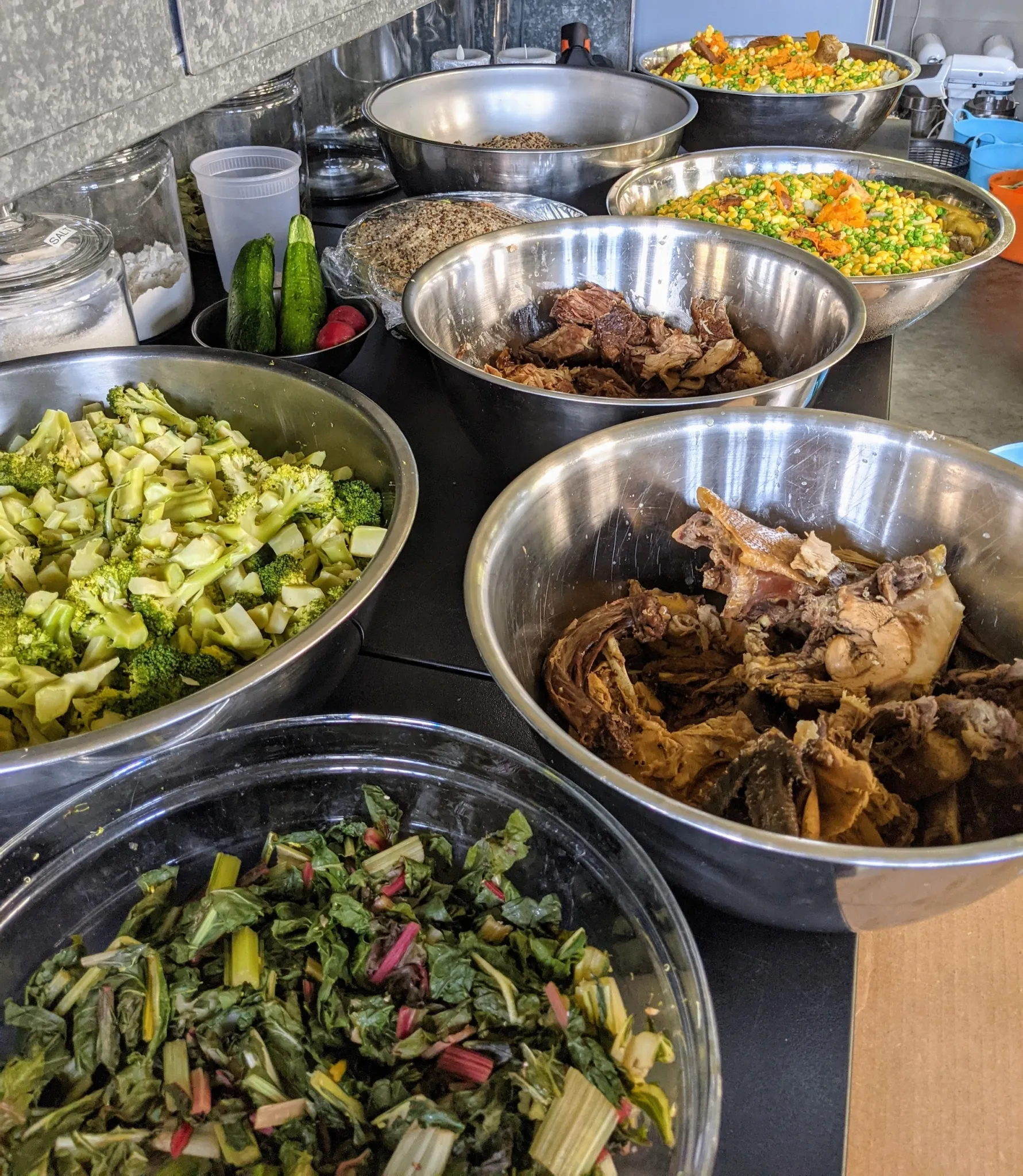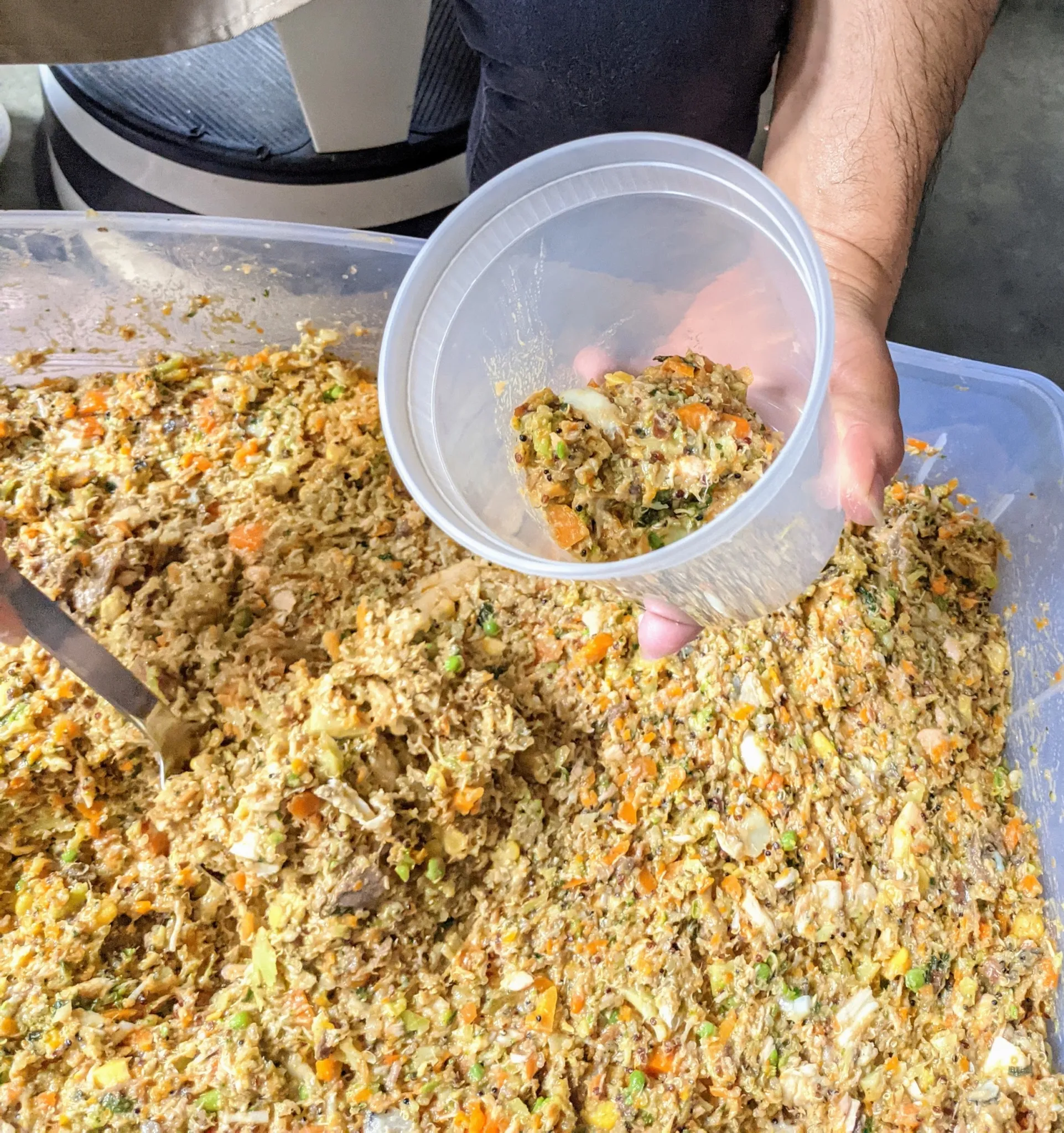Feeding our beloved canine companions nutritious, homemade meals is a growing trend, offering unparalleled control over ingredients and ensuring a diet free from unnecessary preservatives and additives. For owners of large breed dogs, who often have unique dietary needs, crafting your own food can lead to noticeable improvements in their health, coat quality, and overall vitality. This guide will walk you through creating a balanced and delicious homemade meal for your large dogs, drawing inspiration from a successful batch prepared for four healthy canines, including Chows and French Bulldogs, demonstrating how simple, organic ingredients can make a significant difference.
Why Choose Homemade Dog Food for Large Breeds?
Large breed dogs, with their impressive stature and higher energy demands, require specific nutritional considerations. Homemade dog food allows for precise control over protein sources, healthy fats, and complex carbohydrates, all vital for supporting their joint health, muscle mass, and sustained energy levels. By preparing meals yourself, you can select wholesome, organic ingredients from reputable sources, avoiding common allergens and undesirable fillers often found in commercial kibble. This personalized approach ensures your large dog receives the specific nutrients they need for optimal health, contributing to a thick, abundant coat and robust well-being. Opting for homemade options is also a great way to ensure quality if you’re exploring vet approved homemade senior dog food recipes as your large dog ages.
Essential Ingredients for Your Large Dog’s Diet
Creating a balanced meal for your large dog involves a thoughtful combination of high-quality proteins, nutrient-dense vegetables, and wholesome grains. For a substantial batch, consider the following organic ingredients:
Protein Powerhouses
Proteins are fundamental for muscle maintenance and overall health in large dogs. A variety of lean meats and fish provide essential amino acids. In our example batch, we utilized:
- Chicken: A lean and easily digestible protein.
- Beef: Provides robust flavor and a good source of iron.
- Salmon and Tilefish: Excellent sources of Omega-3 fatty acids, crucial for skin, coat, and joint health. A generous quantity, such as 10 pounds of salmon and 13 pounds of tilefish, ensures plenty of these beneficial fats.
Each meat type should be cooked separately and thoroughly to ensure safety and preserve distinct flavors before being processed. Always ensure all bones are removed from the meat before serving, as cooked bones can splinter and be dangerous for dogs.
Wholesome Grains
Grains like quinoa offer vital carbohydrates for energy and fiber for digestive health.
- Quinoa: A gluten-free superfood, packed with essential amino acids and protein. While highly nutritious, it’s a high-protein grain, so serve it in appropriate, measured amounts as part of a balanced diet. Five pounds of cooked quinoa can contribute significantly to a large batch, providing sustained energy.
Nutrient-Rich Vegetables
A colorful array of vegetables boosts vitamin, mineral, and fiber intake, supporting digestive health and providing crucial antioxidants. All vegetables should be cooked until fork-tender to aid digestion.
- Broccoli: Rich in vitamins C and K, and fiber. Six large heads for a big batch provide ample nutrients.
- Carrots: Low in calories, high in fiber, and packed with vitamins. Six bunches cooked until tender are a favorite for many dogs. Occasionally, raw carrots can also offer dental benefits.
- Green Peas: A good source of B vitamins (Thiamin), phosphorus, and potassium. Four large bags of frozen peas are quickly cooked, ensuring they’re not overdone to retain nutrients.
- Corn: Five bags of frozen corn, cooked until tender, add sweetness and additional fiber.
- Yellow and Sweet Potatoes: Both provide complex carbohydrates. Sweet potatoes are especially beneficial for digestive health due to high dietary fiber, and they’re rich in vitamin B6, C, manganese, and the powerful antioxidant beta-carotene.
- Butternut Squash: Another excellent source of vitamins and fiber, contributing to digestive health.
- Swiss Chard: An excellent source of vitamins A and K, and a good source of vitamin C and magnesium, also high in dietary fiber. The tough stems should be boiled until fork-tender (about 10 minutes).
 Wholesome cooked organic vegetables and meats prepared for homemade dog food
Wholesome cooked organic vegetables and meats prepared for homemade dog food
Step-by-Step Guide to Preparing the Meal
Preparing a large batch of homemade dog food is a rewarding process that, while requiring time, ensures your dogs receive the best possible nutrition.
1. Preparing the Vegetables
Begin by cooking all vegetables separately to their ideal tenderness. For instance, broccoli should be chopped and cooked, carrots boiled until fork-tender and mixed with peas, and corn, potatoes, sweet potatoes, and butternut squash also cooked. Swiss chard stems require about 10 minutes of boiling until tender. Cooking each component individually ensures optimal texture and nutrient retention.
2. Cooking Grains and Proteins
While vegetables are cooking, prepare your quinoa. Five pounds of quinoa, once cooked, becomes a substantial base. Simultaneously, cook your beef, chicken, and fish in separate pots. Ensure all meats are thoroughly cooked. For beef, after cooking and cooling, remove it from the bone and chop it into medium to large chunks. Any fat rendered from the meats should also be removed. This step ensures that all components are safe and ready for the next stage.
3. Processing and Mixing
Once all ingredients are cooked and cooled sufficiently to handle, the processing begins. For dogs that prefer their food ground rather than in large chunks, a food processor is indispensable. Process the cooked meats, such as salmon and tilefish, in small batches, taking care to check for and remove any potentially dangerous bones that might have been missed. This step not only makes the food easier for dogs to consume but also ensures a consistent texture.
Next, transfer all the cooked and processed ingredients into a large, clean plastic bin. Start with the quinoa, followed by the mixed carrots, peas, potatoes, and squash, then the broccoli, and finally the processed meats. Thoroughly mix everything together until all ingredients are evenly distributed. This ensures that each serving contains a balanced mix of proteins, carbohydrates, and vegetables. Don’t forget to look at other options like homemade dog food for allergies if your dog has specific sensitivities.
 Cooked broccoli heads in a large stainless steel bowl
Cooked broccoli heads in a large stainless steel bowl
Proper Portioning and Storage for Large Dogs
After your giant batch of homemade dog food is thoroughly mixed, the next crucial step is portioning and storage to maintain freshness and make daily feeding convenient.
Portioning for Convenience
For large dogs, portion control is vital to manage their caloric intake and prevent overfeeding. Quart-sized containers are ideal for individual meal portions. When filling, only fill up to the first line if you plan to freeze the food, allowing room for expansion. This meticulous step, often done in a production line fashion, ensures efficiency and uniformity across all servings. Each lid should be clearly marked with the contents and the date it was prepared, making it easy to track freshness and rotate your stock.
Storage for Longevity
A large batch, such as 65 quarts, requires proper storage to last. Some portions can be kept in the refrigerator for immediate use (typically a few days), while the majority should be stored in freezers. Freezing homemade dog food allows you to prepare large quantities less frequently, saving time and effort in the long run. When needed, simply thaw a container in the refrigerator overnight or use a gentle defrost setting.
 Filling quart-sized containers with homemade dog food in a production line process
Filling quart-sized containers with homemade dog food in a production line process
Serving Suggestions and Dietary Balance
Your homemade dog food can be served as a standalone meal or mixed with high-quality kibble for added texture and nutrition. Many large dogs thrive on two meals a day, once in the morning and once in the evening, which aids digestion. While this homemade recipe is designed to be comprehensive, it’s essential to ensure your dogs receive adequate amounts of all necessary nutrients, including calcium and omega-three fatty acids. If needed, supplements can be added. For delicious snacks, consider exploring options like no bake dog treats without peanut butter or a dog ice cream recipe without yogurt to complement their diet.
Conclusion
Embarking on the journey of preparing homemade dog food for your large canine companions is a commitment to their health and happiness. It provides a rewarding way to ensure they receive organic, wholesome ingredients free from artificial additives, contributing to their vitality and longevity. Remember, while these recipes offer a fantastic foundation, always consult with a veterinarian or a certified canine nutritionist before making significant changes to your dog’s diet. They can help ensure the diet is perfectly balanced for your dog’s specific age, activity level, and health needs. Your efforts in the kitchen will undoubtedly be met with wagging tails and clean bowls, affirming the immense joy and health benefits that homemade food brings to your furry family members.
